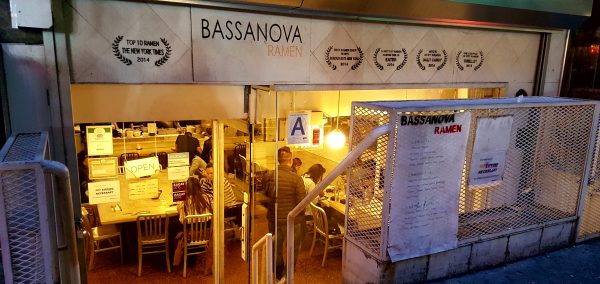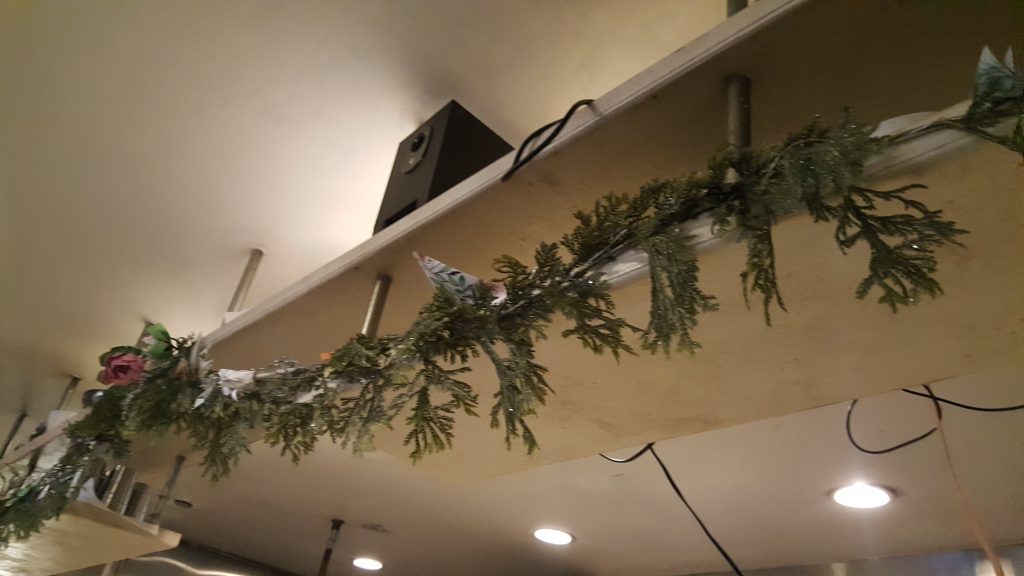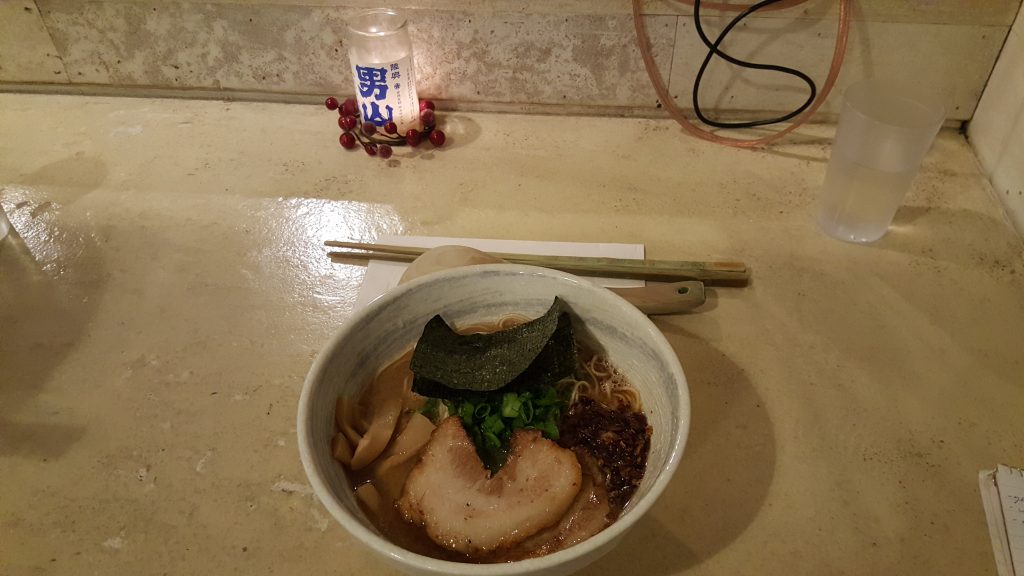
Bassanova Ramen is the foodie experience all NYU students need
Bassanova Ramen is not your everyday ramen shop
In the heart of Chinatown, at the bottom of a small flight of stairs under a white minimalist sign, sits Bassanova Ramen. About a 6-minute walk from NYU’s Lafayette Hall, this cozy and chic space might look like an underground museum exhibit, not a ramen shop. It lacks the typical earthy tones of the kitchen-side bar and the mimicked, Americanized-Japanese aesthetic; there is no Japanese pop playing, no iconic Great Wave off Kanagawa paintings on the walls, no traditional fabric dividers that hang off the door to the entrance.

At Bassanova, these are replaced with modern acrylic portraits that hang on one side of the beige space, out-of-season plastic holly and Christmas lights that dangle from high shelves near the kitchen and down from the ceiling, and chill hip-hop music that mixes with the hum of customers chatting over their steaming bowls of noodles. The light-beige tables are set with a metal chair, a single white napkin and larger-than-usual wooden chopsticks with a matching spoon. A little candle with blue Japanese characters lights this fusion-flavored, unique ramen experience.

Really, the only thing Bassanova has in common with other ramen shops is its prices: your traditional noodles in broth ranges from $13 to $15, soupless ramen doesn’t exceed more than $12.50, and appetizers like Japanese-style dumplings and pork buns sit at $4. Their “Deluxe Set”, a half-serving of ramen and a serving of chashu donburi (pork rice bowl), depending on the type of ramen you order costs between $12 and $14. Soup-dipping noodles, cold ramen noodles served with hot broth in a separate bowl — popular during the summer, for when you’re craving ramen without all the steam of a big bowl of noodles — ranges from $12.95 and $13.95.
There are even more affordable options for the very same ramen that Bassanova is famous for: half-portions of any kind of ramen on the menu for as little as $9 and only so much as $11. And at a place like this, where the servers don’t require tip at all (as the signs at the entrance proclaim), Bassanova is a place for amazing ramen at relatively cheap prices. For students doing a summer term and just anyone on a budget, Bassanova is the perfect place for an inexpensive bite of awesome proportions.
Somewhere between fine European dining and traditional Japanese cuisine, Bassanova finds its identity in the form of its critically acclaimed Tondaku Truffle Oil Wadashi Ramen. The ramen is just as the name suggests: tondaku ramen made with truffle oil. Made with Berkshire pork tonkotsu and wadashi bouillon soup, topped with pork loin chashu, menma bamboo shoots, gyofun, nori, fried ginger onions and scallions, this bowl of ramen is a complex dynamic of flavors.
The broth is thick with the rounded-out flavor of the truffle oil, the pork chashu simply dissolves in your mouth, the flakes of the fried ginger onions add a roasted kick. The perfect marriage of the broth and all of its expertly prepared ingredients begs the question of how you’ve never tried something as intuitively prepared before. Whereas other ramen shops pride themselves on their broth, or their noodles, or their seasoning, none can quite achieve the golden ratio of Bassanova’s truffle oil masterpiece.

And Bassanova knows it, too. On the very first page of their miniature laminated booklet of a menu, Bassanova spells out exactly how much you’re going to enjoy this ramen: “Once a bowl of BASSANOVA Ramen is set before you, you are to enjoy our creamy and rich Tondaku deep pork bouillon soup.” The paragraph goes on to list all of its awards and accolades for its popular ramen, including “rave reviews from CNN” and “ranked on Asia’s Top-10 Soup list”, as well as numerous websites citing Bassanova as lots of variations on Best Ramen.

The chic atmosphere, the casual wait staff who don’t ask for tip, the delicious ramen that is just shy of being overshadowed by its own praise, Bassanova Ramen is an experience for ramen lovers seeking a fusion flavor journey that combines the minimalism of the modern age and the maximalism of traditional Japanese flavors. Whether it’s good manners or not, in this case, you’re going to want to drink the rest of the broth straight from the bowl
